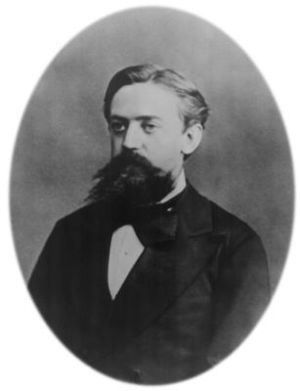- About MAA
- Membership
- MAA Publications
- Periodicals
- Blogs
- MAA Book Series
- MAA Press (an imprint of the AMS)
- MAA Notes
- MAA Reviews
- Mathematical Communication
- Information for Libraries
- Author Resources
- Advertise with MAA
- Meetings
- Competitions
- Programs
- Communities
- MAA Sections
- SIGMAA
- MAA Connect
- Students
- MAA Awards
- Awards Booklets
- Writing Awards
- Teaching Awards
- Service Awards
- Research Awards
- Lecture Awards
- Putnam Competition Individual and Team Winners
- D. E. Shaw Group AMC 8 Awards & Certificates
- Maryam Mirzakhani AMC 10 A Awards & Certificates
- Two Sigma AMC 10 B Awards & Certificates
- Jane Street AMC 12 A Awards & Certificates
- Akamai AMC 12 B Awards & Certificates
- High School Teachers
- News
You are here
A Selection of Problems from A.A. Markov’s Calculus of Probabilities
In 1900, Andrei Andreevich Markov (1856–1922) wrote the first edition of the book, Calculus of Probabilities (Исчисление Вероятностей). This was around the time that Russian mathematicians became interested in probability, so this book was likely one of the first comprehensive Russian texts on the subject. Three more editions followed—in 1908, 1912, and, posthumously, 1924. Parts of the second and third editions have been translated into French and German, but there appears to be no English translation of any of the editions until now.
In this article, I present an English translation of five of the eight problems, and worked solutions, from Chapter IV of the first edition of Markov’s book (Problems 1, 2, 3, 4, and 8). With some updating of notation and terminology, these could have been written today and, thus, are particularly amenable for discussion in elementary probability courses. In particular, these examples (and all other examples in the first four chapters) have finite, equiprobable sample spaces. In addition, after presenting the five worked problems, I include some additional analysis provided by Markov on calculating probabilities of repeated independent events, using what today we would label as Bernoulli random variables.
It is generally agreed that the origin of the formal study of probability dates to the 17th century, when mathematicians such as Blaise Pascal (1623–1662), Pierre de Fermat (1601–1665), and Jakob Bernoulli (1655–1705) were interested in games of chance.1 As we see, that focus continues here with these problems from Markov’s book. Problems 5, 6 and 7 of Chapter IV are simply variations on Problem 4.

Figure 1. A. A. Markov (1856–1922).
Convergence Portrait Gallery.
In what follows, I begin with some biographical information about Markov followed by further details about the various editions and translations of his book. I then present the English translations of the five selected problems, with some brief commentary on each. I close by offering some specific suggestions about how instructors could use the translated material with students in various elementary probability courses.
Readers may navigate this article either by using the table of contents listed at the bottom of this page, or by using the hierarchical outline provided here:
- Biographical information about A. A. Markov
- Brief history of his book, Calculus of Probabilities
- Presenting the problems
- Problem 1: Selecting balls from a vessel
- Problem 2: A lottery game
- Problem 3: Some generalizations of Problem 2
- Problem 4: A simple gambling game
- Problem 8: Sums of independent random variables
- Calculating probabilities of repeated independent events
- Suggestions for the classroom and conclusion
Readers interested in my full translation of Markov’s first edition may find it here.
[1] One place to begin exploring the early history of probability is the 2015 Convergence article, “The ‘Problem of Points’ and Perseverance,” by Keith Devlin.
Alan Levine (Franklin and Marshall College), "A Selection of Problems from A.A. Markov’s Calculus of Probabilities," Convergence (November 2023), DOI:10.4169/convergence20231101




